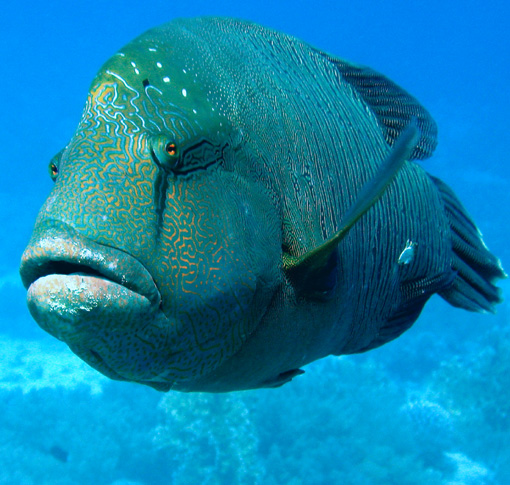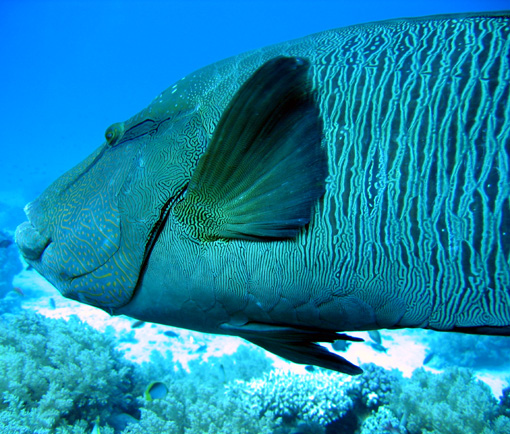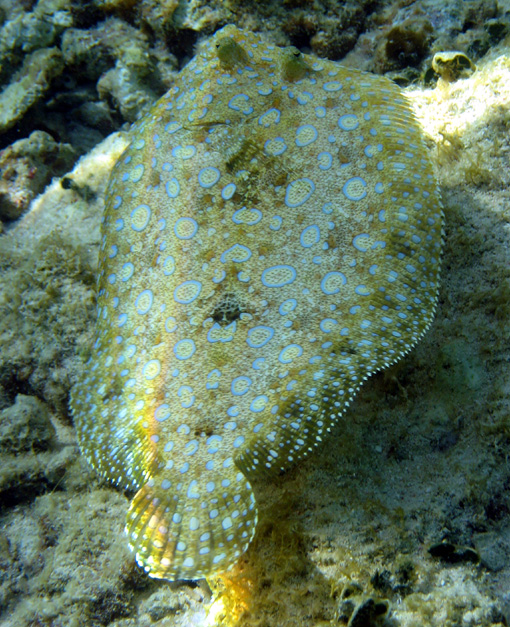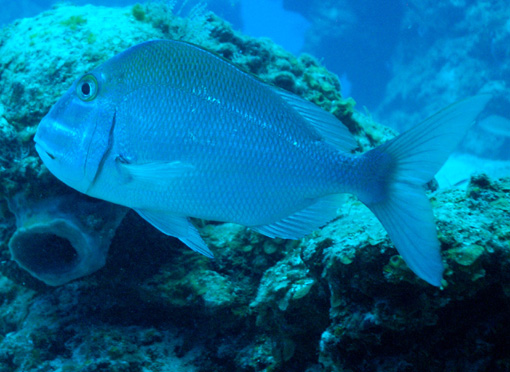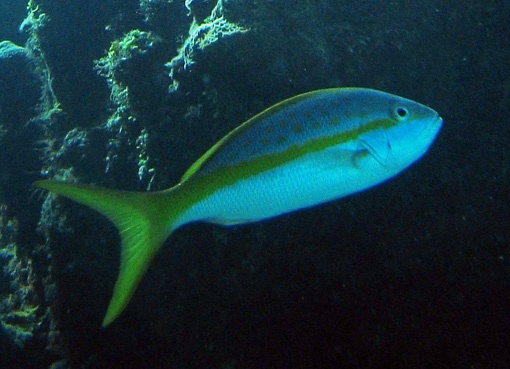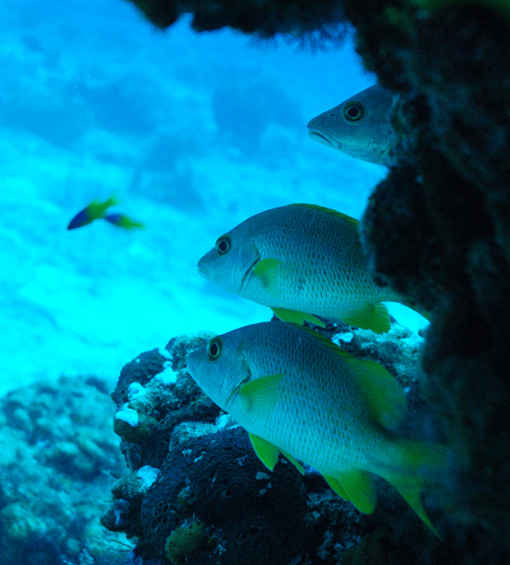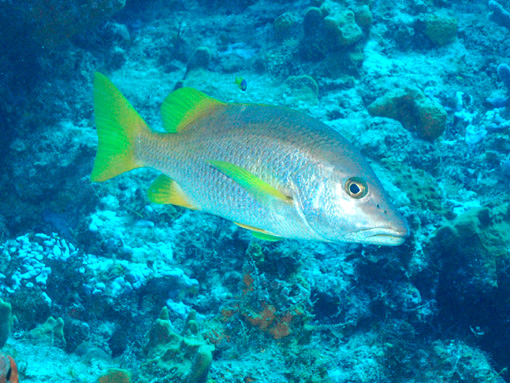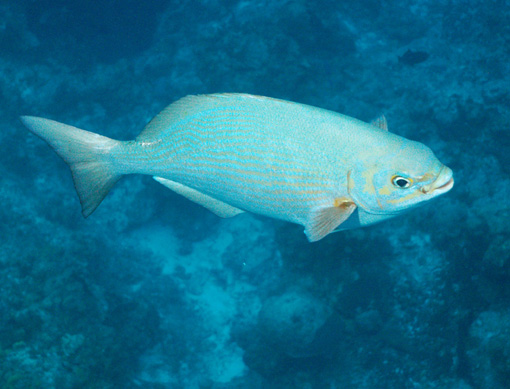The humphead wrasse, Cheilinus undulatus, is a wrasse that is mainly found in coral reefs in the Indo-Pacific region. It is also known as the Maori wrasse, Napoleon wrasse, Napoleonfish.
The humphead wrasse is the largest living member of the family Labridae, with males reaching 6 feet (2 m) in length, while females rarely exceed about 3 feet (1 m). It has thick, fleshy lips and a hump that forms on its head above the eyes, becoming more prominent as the fish ages. Males range from a bright electric blue to green, a purplish blue, or a relatively dull blue/green. Juveniles and females are red-orange above, and red-orange to white below. Some males grow very large, with one unconfirmed report of a Humphead Wrasse that was 7.75 feet (2.29 m) long and weighed 420 lbs (190.5 kg).
Adults are confined to steep coral reef slopes, channel slopes, and lagoon reefs in water 3 to 330 feet (1-100 m) deep. They primarily eat mollusks, fishes, sea urchins, crustaceans, and other invertebrates and are one of the few predators of toxic animals such as sea hares, boxfishes, and crown-of-thorns star fish. This species actively selects branching hard and soft corals and seagrasses at settlement. Juveniles tend to prefer a more cryptic existence in areas of dense branching corals, bushy macroalgae or seagrasses, while larger individuals and adults prefer to occupy limited home ranges in more open habitat on the edges of reefs, channels, and reef passes. The species is most often observed in solitary male-female pairs, or groups of two to seven individuals.
